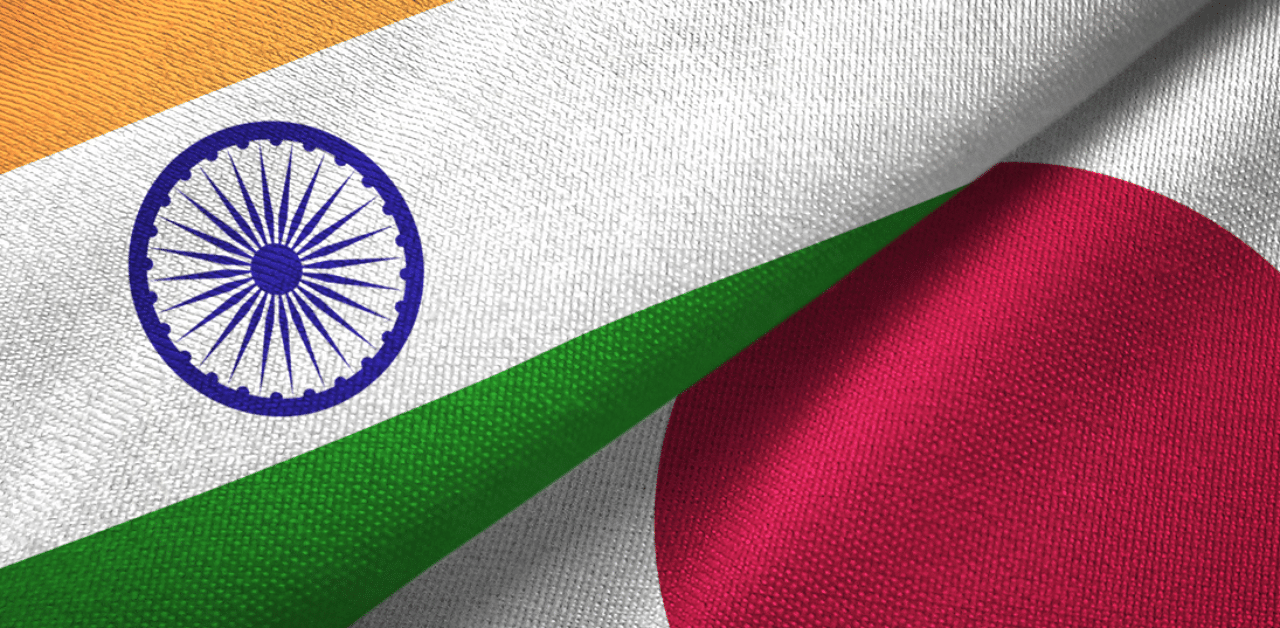
India and Japan have opened up their military bases for each other’s army, navy and air force – elevating bilateral defence cooperation amid China's growing belligerence.
With New Delhi and Tokyo signing the Acquisition and Cross-Servicing Agreement (ACSA), India now has military logistics sharing agreement with all its partners – the United States, Australia and Japan – in the ‘Quad’, a four-nation coalition re-launched in November 2017 to build a bulwark against China’s expansionist moves in the Indo-Pacific region.
The India-Japan Acquisition and Cross-Servicing Agreement (ACSA) was signed in New Delhi shortly before the Prime Ministers of the two nations – Narendra Modi and Shinzo Abe – spoke with each other over the phone. They concurred that the agreement would “further enhance the depth of defence cooperation between the two countries and contribute to peace and security in the Indo-Pacific region”, according to a press release issued by the Ministry of External Affairs in New Delhi.
Modi and Abe were expected to hold a virtual summit on Thursday but since Abe recently announced his resignation from the office of the Prime Minister of Japan, a full-fledged summit was not held.
The new pact will set up a framework for the militaries of India and Japan to share logistics and help each other by providing food, water, billeting, transport, petroleum, oils, lubricants, clothing and communications as well as medical services to each other’s personnel. It also allows sharing of military bases, storage and other facilities, training services, spare parts and components as well as providing repair and maintenance services at the airports and seaports to each other.
New Delhi signed the military logistics sharing agreement with Tokyo amid China’s growing belligerence, not only along its disputed boundary with India, but also elsewhere in Indo-Pacific, including in the contested waters of the South China Sea and the East China Sea as well as in Taiwan Strait.
The Logistics Exchange Memorandum of Agreement (LEMOA) between India and the United States was signed in August 2016. India and Australia signed a similar Mutual Logistics Support Agreement (MLSA) on June 4 this year – just about a month after the stand-off between the Indian Army and the Chinese People’s Liberation Army (PLA) started in eastern Ladakh.
China’s aggressive moves to alter the status quo along its disputed boundary with India prompted New Delhi to focus on adding military heft to the ‘Quad’. The warships of the Indian Navy and Japanese Maritime Self-Defence Force had an exercise in the Indian Ocean on June 27. The Indian Navy’s warships on July 20 also participated in a drill with the USS Nimitz Carrier Strike Group, which was on its way to West Asia after conducting a drill with USS Ronald Reagan in the South China Sea.
The navies of India, Japan and the US are likely to hold the Malabar 2020 exercise later this year near the Malacca Strait in the Indian Ocean in order to send out the message to China that the sea lane, which is vital for the communist country, could be choked in case of a conflict in the region. The annual trilateral drill may even be elevated to the first-ever naval exercise of the Quad with the participation of the Australian Navy – a move, which could raise China's hackles.
